His Majesty King Carl XVI Gustaf of Sweden captured the sentiment of the moment, calling the new center “a dynamic, creative, interesting world, so far from home and yet so near,” while The New York Times hailed it as “a gift to the city”. The week-long opening festivities drew over 5,000 visitors, a testament to the excitement and high hopes for this first-of-its-kind cultural hub. Twenty-five years later, Scandinavia House remains a vibrant fixture in New York’s cultural landscape – a living bridge between the Nordic countries and the United States.
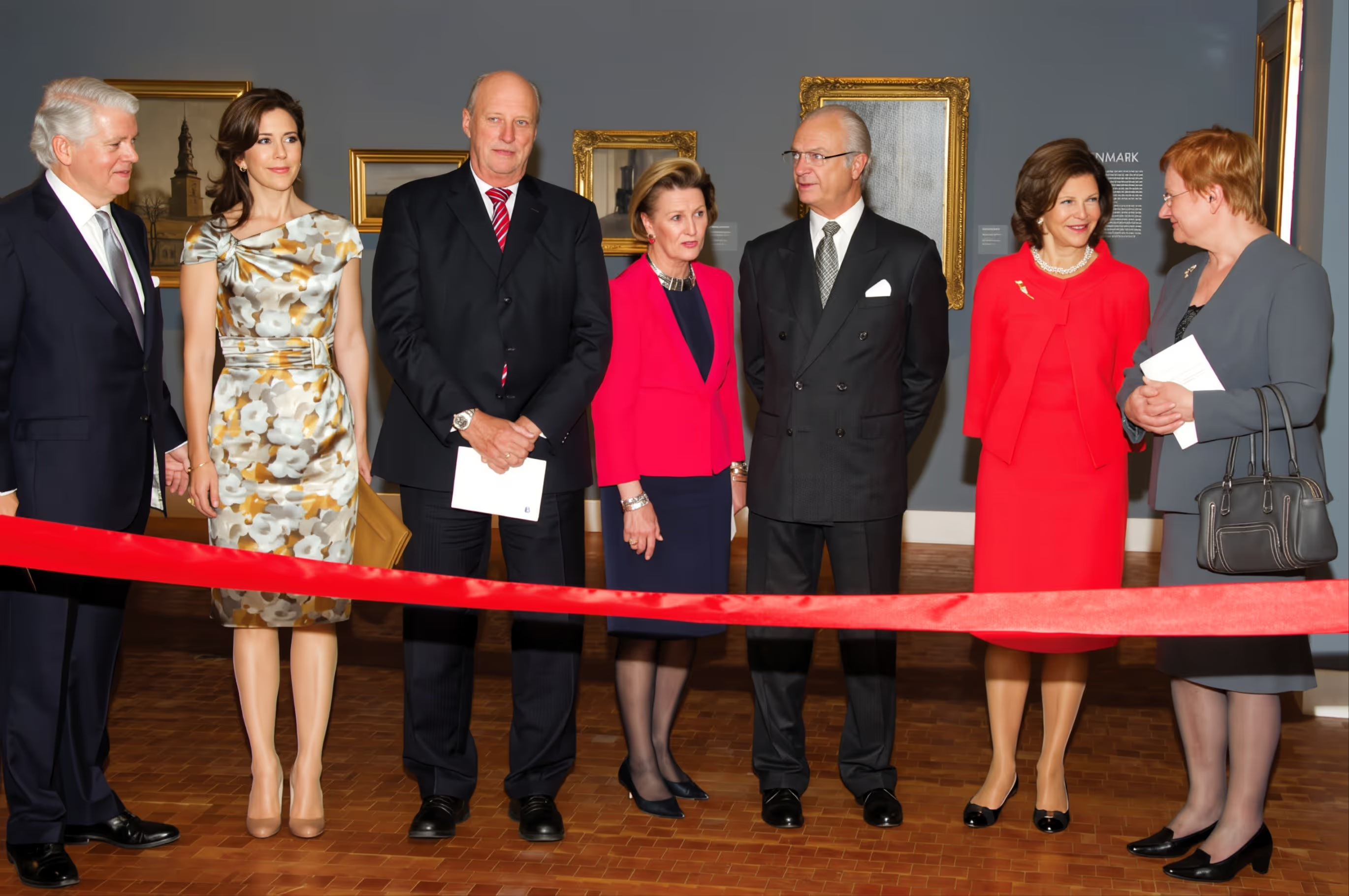
Nordic New York Before Scandinavia House
Long before Scandinavia House opened its doors, New York’s Nordic and Nordic-American communities yearned for a dedicated cultural space. The American-Scandinavian Foundation (ASF), which created Scandinavia House, had been promoting exchange and friendship between the U.S. and the Nordic nations since 1911. For decades, however, ASF operated out of a modest townhouse on East 73rd Street that severely limited its public programming. “The townhouse was wonderful but inadequate for exhibitions and lectures,” recalled Lena Biörck Kaplan, who became ASF’s president in 1989, noting it had “no single room that could fit more than 30 people. So ASF wasn’t able to optimize the educational and cultural exchange that was at the core of our mission”. In the absence of a central venue, Nordic culture in New York was kept alive through scattered efforts – consulate events, church basements, heritage societies, and rented halls. By the late 1980s, ASF leaders and community members recognized a long-standing need: a true Nordic “home” in New York where art, language, and heritage could be shared with a wide audience. It was time to think big.
Building a Nordic Center on Park Avenue
That big idea – to establish a permanent, public Nordic cultural center – began taking shape in the early 1990s. ASF’s Board of Trustees embraced a bold vision: a flagship home in New York City that would stand as a lasting symbol of the close bonds between the United States and the five Nordic nations. Turning this vision into reality required years of planning, fundraising, and transatlantic partnership. An early catalyst came in 1993 with an anonymous $1 million pledge (later revealed to be from Danish shipping magnate Mærsk Mc-Kinney Møller) that jump-started the capital campaign. By 1996, ASF had sold its old townhouse and purchased two adjacent townhouses at the corner of Park Avenue and East 38th Street – formerly the site of East Germany’s UN mission – as the site for the new center. Renowned architect James Stewart Polshek and his Polshek Partnership (now Ennead Architects) were selected to design the building, thanks to Polshek’s international reputation and an affinity for Scandinavian design dating back to his Fulbright year in Denmark in the 1950s. Rather than renovate the aging structures, ASF opted to start fresh: the old buildings were demolished to make way for a sleek six-story modern facility tailored to cultural programming.
Funding this multimillion-dollar project was truly a transatlantic endeavor. Hundreds of individuals, corporations, and foundations on both sides of the ocean stepped up to help. In total, roughly 300 donors from the U.S. and abroad contributed to the construction and endowment of Scandinavia House. Notably, after careful negotiation, all five Nordic governments – Denmark, Finland, Iceland, Norway, and Sweden – as well as the Nordic Council of Ministers provided support of about $500,000 each. This unique public-private partnership underscored the significance of the project: Scandinavia House was not only an American initiative, but a point of pride for the Nordic countries as well. By the end of the decade, the funding was in place, the design finalized, and “Scandinavia House” was ready to rise on Park Avenue, just blocks south of Grand Central Terminal in the Murray Hill neighborhood.
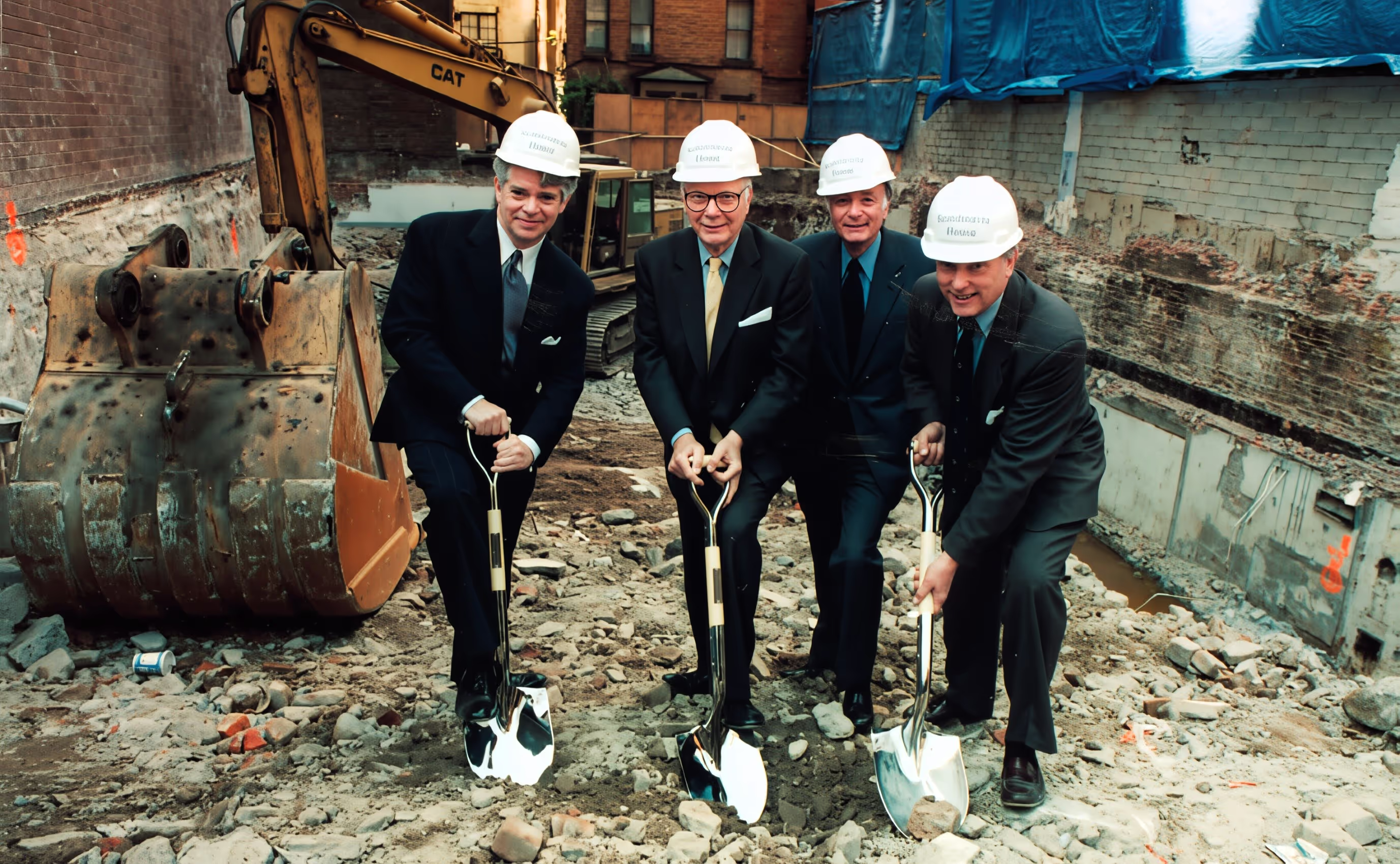
The architecture of the new Nordic center blended modern New York sleekness with Scandinavian sensibilities. Polshek’s team embraced minimalist forms and natural materials to reflect Nordic design ethos. The building’s understated elegance is evident in its facade of glass and zinc, with spare glass edges softened by golden-hued wood slats at the entrance and birch accents throughout the interior. Iconic Artichoke pendant lamps designed by Denmark’s Poul Henningsen cast a warm glow, providing hygge-like ambience in the lobby. Inside, the layout was purpose-built for cultural exchange: a ground-floor Nordic café and design shop to welcome visitors, a 168-seat auditorium below for films and concerts, a spacious gallery upstairs for art exhibitions, a library for Nordic literature, and even a dedicated children’s play and learning center. Every element was designed to say Velkommen/Välkommen – welcome – to the public. As ASF President Edward Gallagher (who oversaw the project from 1996 on) noted, they wanted a “fully public building” that would invite all New Yorkers to experience Nordic culture.
Opening Day: A Royal Inauguration
After years of effort, Scandinavia House officially opened its doors in October 2000 with great fanfare. The inaugural week became a who’s-who of Nordic dignitaries and cultural figures. Sweden’s King Carl XVI Gustaf and Queen Silvia attended with their daughter Crown Princess Victoria; Norway’s Princess Märtha Louise and Denmark’s Princess Benedikte came to represent their nations, joined by Ólafur Ragnar Grímsson, the President of Iceland, and a delegation from Finland. U.S. leaders, including then-UN Ambassador Richard Holbrooke, also took part. It was a scene unprecedented in New York’s cultural world – Nordic royalty mingling under one roof on Park Avenue. At the dedication ceremony on October 16, 2000, ASF Chairman Kristján Ragnarsson proclaimed the center a milestone in U.S.-Nordic relations, and the attendees’ enthusiasm echoed that sentiment. As mentioned, King Carl Gustaf lauded the center as “so far from home and yet so near,” emphasizing how the Nordic countries suddenly felt a bit closer to New York. New Yorkers, too, immediately recognized the value of this addition to the city’s cultural mosaic – The New York Times’ declaration of Scandinavia House as “a gift to the city” became a frequently quoted seal of approval.

In its early days, Scandinavia House quickly proved its worth as a gathering place. Curious visitors streamed in to check out the debut art exhibitions and sample Nordic food at the café. The inaugural exhibition showcased contemporary art from across the Nordic region, setting the tone for the interdisciplinary programming to come. That first week alone saw thousands of guests exploring the galleries and attending concerts and film screenings. The excitement of opening day was only the beginning of what would become a quarter-century (and counting) of cultural offerings.
From Gallery to Classroom: 25 Years of Nordic Programs
In the 25 years since its founding, Scandinavia House has delivered an astounding range of programs celebrating the arts, language, and ideas of the Nordic countries. What began as a vision has blossomed into a daily reality of exhibitions, performances, and educational activities that draw locals and tourists alike. The numbers tell a remarkable story of growth and impact. For example, since opening in 2000 Scandinavia House has:
- Welcomed over three million visitors
- Presented 75 art exhibitions – from classical paintings to cutting-edge contemporary installations
- Hosted more than 2,500 film screenings, concerts, lectures, and other cultural programs
- Organized some 2,000 programs for children and families, from kids’ art workshops to Nordic storytelling hours
- Offered language classes in Swedish, Danish, and Norwegian to help new generations (and Americans) learn Scandinavian languages
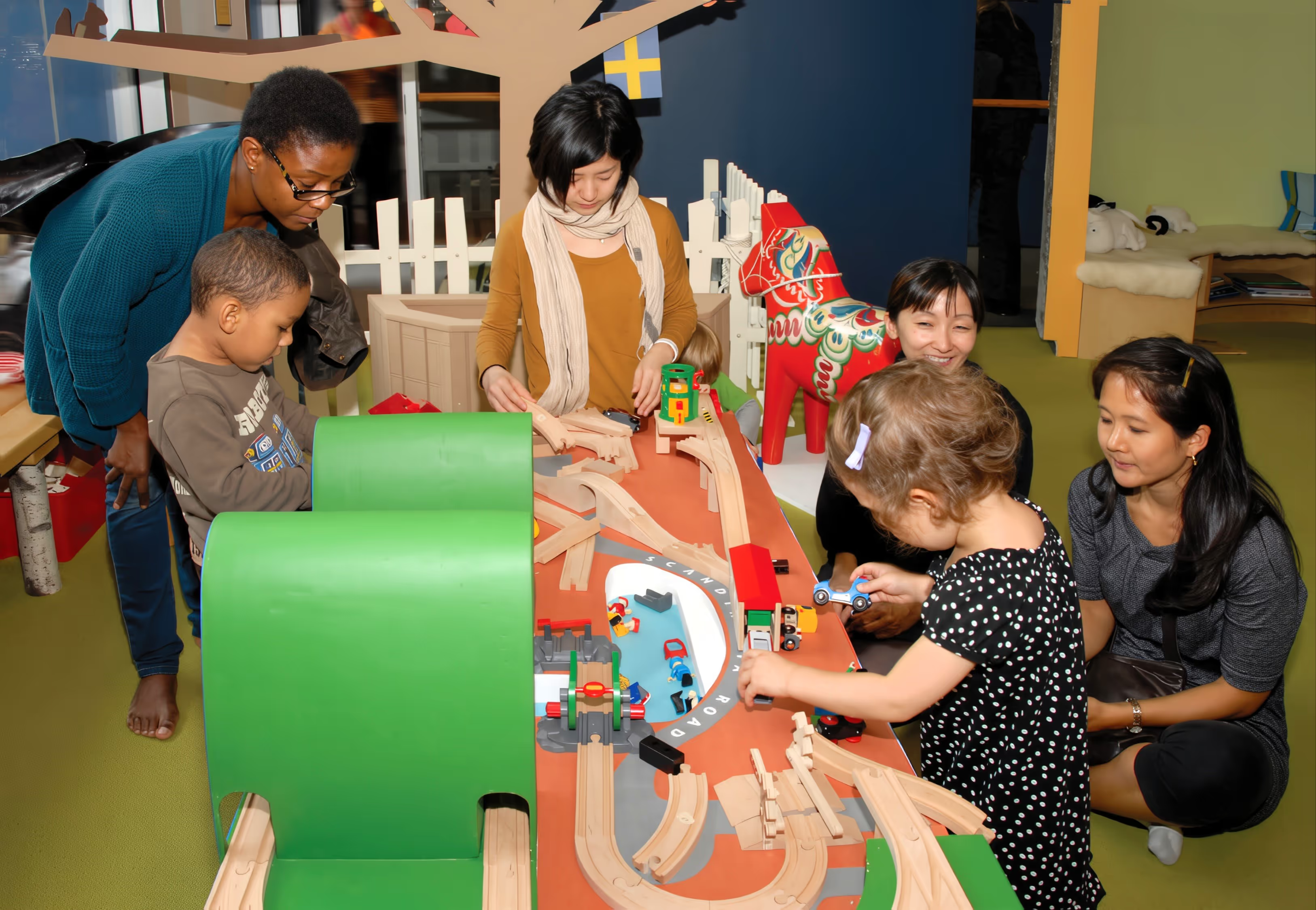
This impressive breadth of activity has made Scandinavia House the leading center for Nordic culture in the United States. On any given week, one might find a Finnish design exhibition opening on the third-floor gallery, a Danish film screening in the basement auditorium, a Norwegian author reading from a new novel in the library, and a Swedish children’s sing-along happening in the playroom. The center’s calendar reads like a panorama of Nordic life: photography retrospectives, indie film festivals, folk and jazz concerts, architecture talks, language immersion classes, and holiday craft workshops all find a place here. Such diverse programming reflects the core mission “to promote greater understanding and appreciation of Nordic cultures, celebrating our differences and similarities” – a mission that remains “more important and relevant than ever” in today’s world, as Edward Gallagher has observed.
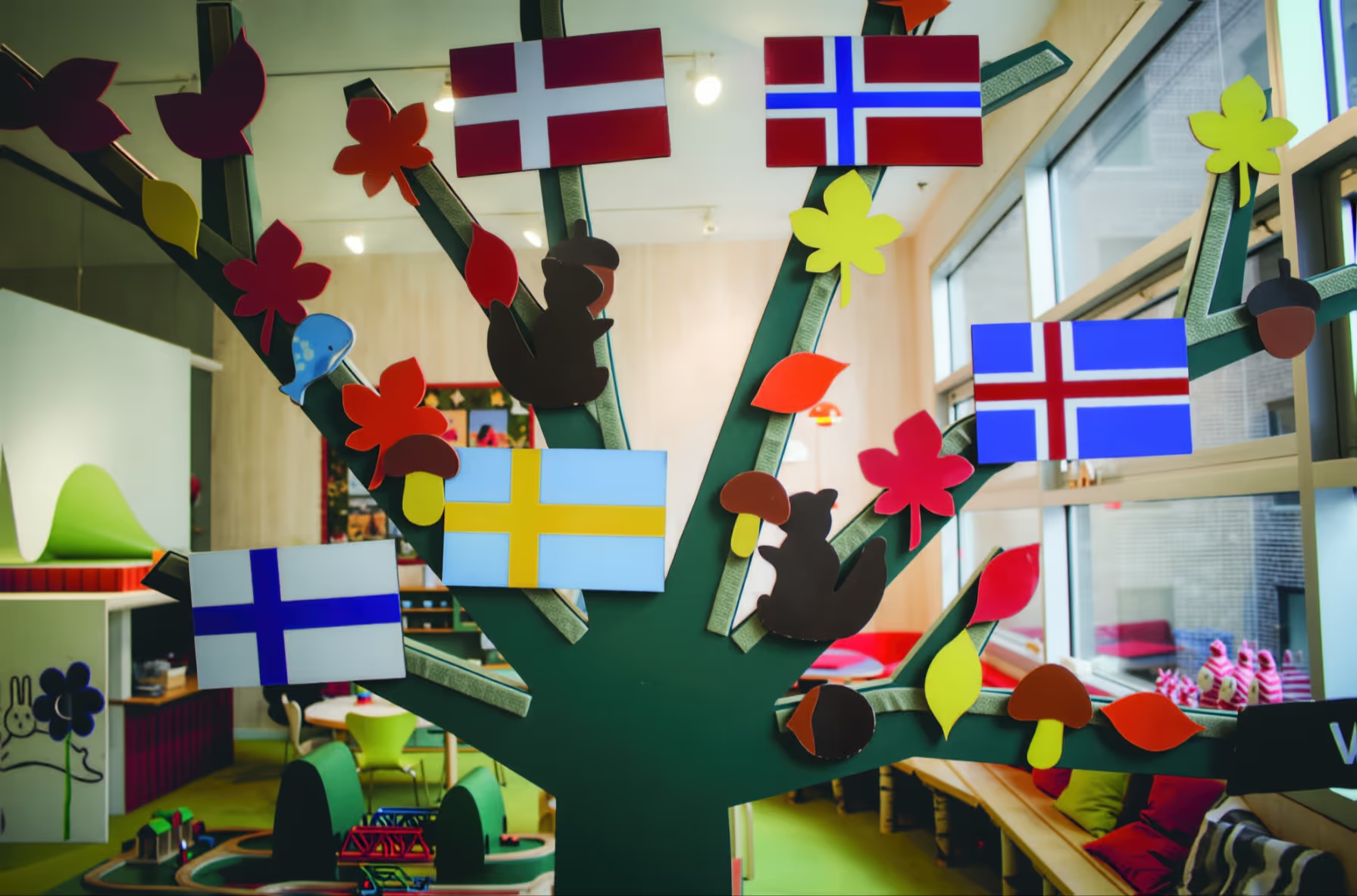
Not only has Scandinavia House showcased acclaimed Nordic artists and performers, it has also fostered new cross-cultural collaborations. Over the years, all the Nordic heads of state and numerous members of Nordic royal families have visited the center during their New York travels. Internationally renowned artists, musicians, filmmakers, and scholars have headlined events, delighting audiences and often engaging in dialogue with their American counterparts. Major New York institutions have partnered with Scandinavia House on programming – for instance, the center has co-presented lectures with the Metropolitan Museum of Art and MoMA, and even hosted academic symposia in partnership with Columbia University. Such collaborations underscore Scandinavia House’s role as a two-way conduit: it brings Nordic culture to America, and also highlights Nordic contributions to global conversations on art, design, and even pressing issues like climate change.
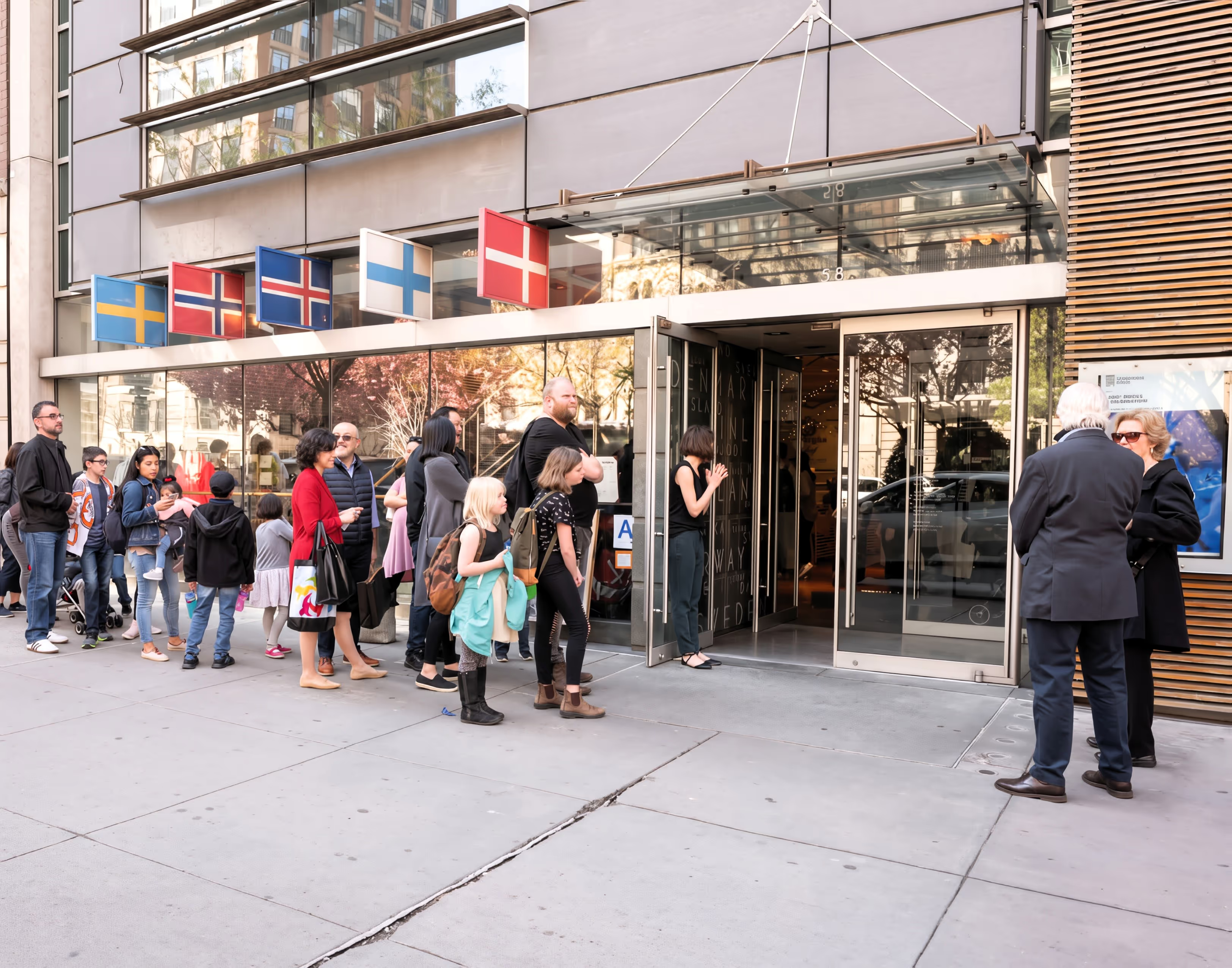
A Home for Heritage, Language and Community
Beyond the high-profile exhibitions and concerts, Scandinavia House has become a true community hub – a place where people can connect with Nordic heritage (and each other) in a welcoming setting. Step inside on a weekday morning, and you might see strollers parked in the lobby and children’s laughter echoing down the hall. The Heimbold Family Children’s Center on the fourth floor is often filled with toddlers and parents enjoying Scandinavian storybooks or playing amid colorful decor. (The space even incorporates the flags of the five Nordic nations into its design, underlining that all are welcome.) Scandinavia House’s atmosphere is equal parts cultural center and living room – somewhere visitors can drop by for a Swedish cinnamon bun at the café, browse Finnish glassware and Icelandic crafts in the gift shop, and feel at home. “You have given us… a foundation, a house, a home we can visit and remember and share our heritage and our culture, [where] we all belong together,” acclaimed Norwegian actress and director Liv Ullmann said in praise of ASF’s efforts, capturing how meaningful the space has become for Nordic-Americans and friends of Nordic culture. Her words ring true: for many of Scandinavian descent living in the U.S., as well as expats and exchange students, Scandinavia House has offered a place to celebrate holidays, attend Maypole dances or Lucia processions, and keep traditions alive far from their original homelands. American visitors, too, have found joy in discovering the “hygge” of a Nordic Christmas market or learning a bit of Norwegian in an evening class.
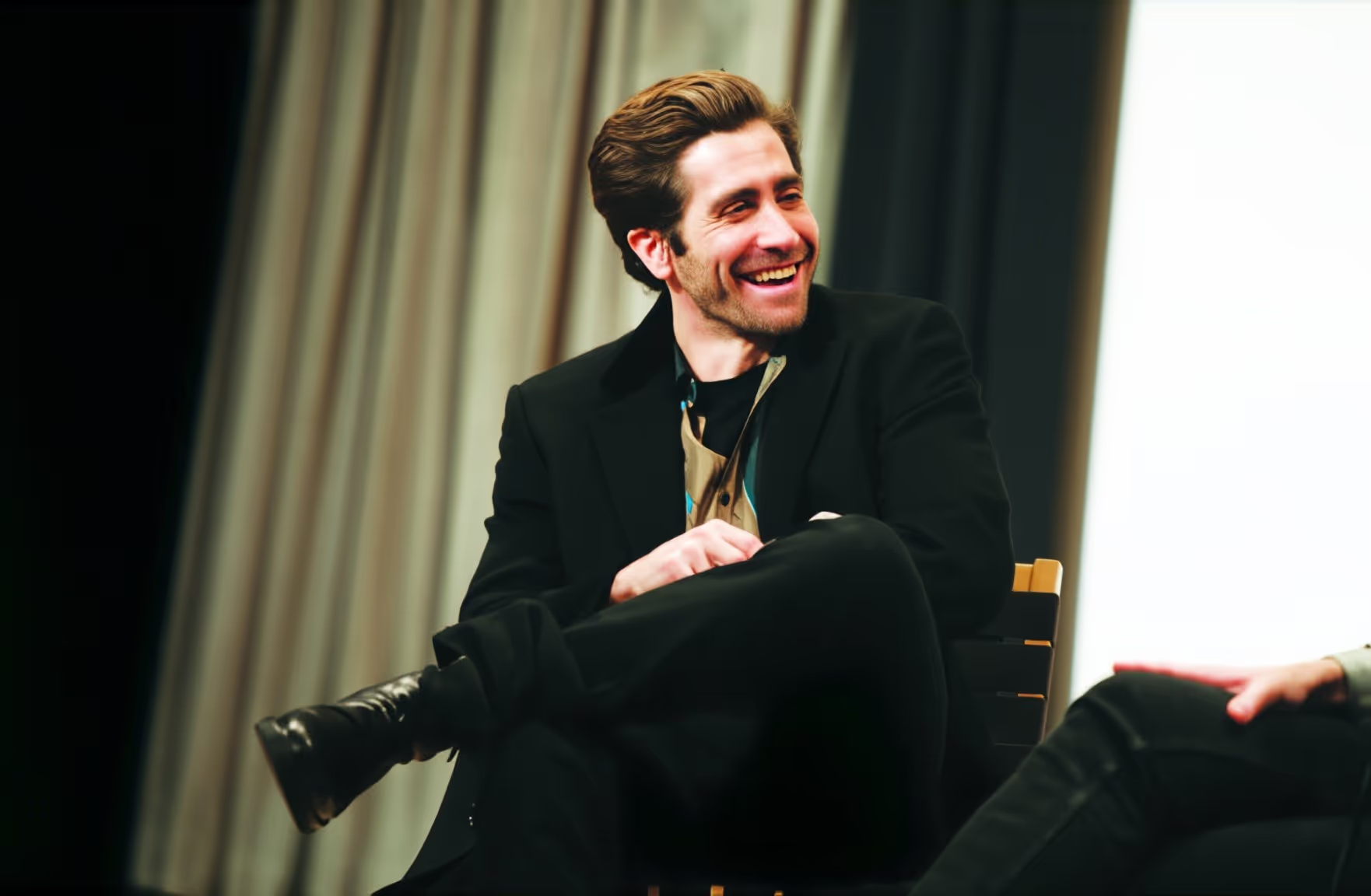
Importantly, Scandinavia House’s intimate scale and informal warmth have made it an entry point for cultural exchange that feels personal. “We have wonderful large cultural institutions in New York City. However, a smaller institution, like ours, devoted to culture, personalizes the entire experience,” Edward Gallagher notes. Regular attendees come to know the staff by name, forging friendships over fika (coffee) and discussions of the latest Nordic film. Many young families in New York have had their first exposure to Nordic culture through the center’s kids’ programs, whether learning Swedish nursery rhymes or crafting paper Santa goats at Christmas. Such grassroots engagement ensures that the connection between the Nordic countries and the local community stays lively and strong. Scandinavia House has essentially given Nordic culture a permanent address in America – not just a physical space, but a cultural home.

Cornerstone of Nordic Cultural Diplomacy
From its inception, Scandinavia House was envisioned not only as a community center but also as a beacon of cultural diplomacy. The presence of five Nordic heads of state at the opening signaled the center’s diplomatic importance, and in the years since, it has firmly established itself as a cornerstone of Nordic-American relations. In official terms, it’s a non-governmental institution – but in practice, Scandinavia House often functions like an unofficial embassy of culture. Nordic consulates in New York frequently collaborate with the center to host visiting performers, organize national celebrations, or mount special exhibitions tied to state visits. The venue’s Volvo Hall and Victor Borge Hall have been the sites of countless receptions for visiting Nordic ministers and monarchs, as well as panel discussions on shared policy issues (from green energy to education) held on neutral cultural ground. The United Nations, headquartered just a few blocks away, has even utilized Scandinavia House for side events and meetings; in one recent year, more than 400 UN-related gatherings took place in its facilities, leveraging the center’s convenient location and international spirit. All of this activity reinforces the role of culture in diplomacy. By sharing art and ideas in an open public forum, Scandinavia House helps strengthen the bonds of friendship and understanding that underpin formal alliances.
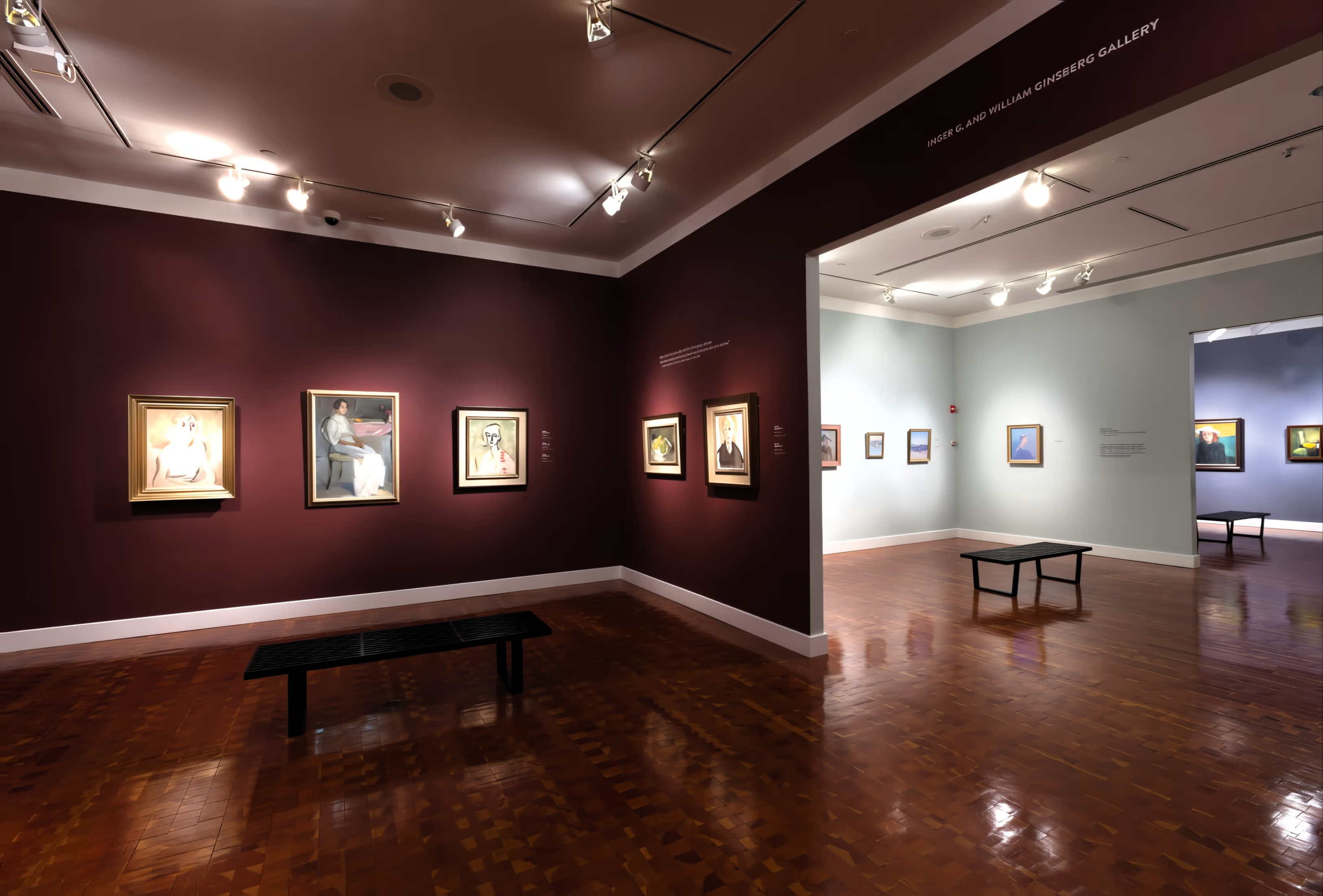
Scandinavia House’s diplomatic impact is perhaps most visible in the many high-level visits it has hosted. Every sitting Nordic prime minister and monarch of the past quarter-century has walked through its doors. These visits are often paired with cultural showcases – for example, a King of Norway might open an exhibition of Norwegian landscape paintings, or a Finnish President might attend a concert of Sibelius’s music in the hall. Such events create memorable moments of exchange: American audiences get to engage directly with Nordic leaders in a cultural context rather than a political one. As a result, the center has earned a reputation as a place where dialogue happens organically. Diplomats have lauded Scandinavia House for building “goodwill through educational and cultural exchange,” echoing ASF’s founding mission. In many ways, the center’s success has validated the idea that cultural diplomacy can be just as powerful as traditional statecraft. By inviting people to experience the richness of Nordic life – whether through a film, a lecture, or a cup of lingonberry juice – Scandinavia House fosters mutual respect and curiosity, helping to keep transatlantic relationships warm and resilient.
Reaching Beyond the Nordic Five
While the core focus of Scandinavia House is the five Nordic nations, the spirit of inclusivity at this cultural center has extended to neighboring regions as well. In recent years, the house has also opened its doors to Baltic cultural events and performers, recognizing the shared and intersecting histories of Northern Europe. One notable example is the New York Baltic Film Festival (NYBFF), which Scandinavia House has co-presented annually in partnership with the Estonian, Latvian, and Lithuanian consulates. Every fall, this festival brings the best new films from the Baltic states to New York City, with screenings and director Q&As held in the Victor Borge Hall. Audiences have had the chance to watch everything from Latvian period dramas to Estonian documentaries and Lithuanian art films, all under the same roof that regularly showcases Nordic cinema. The Baltic Film Festival has proven popular, often selling out shows and adding a new dimension to the center’s programming. It’s not unusual during festival week to find Baltic language being spoken in the lobby and Baltic delicacies in the café – a reminder that cultural centers can build bridges beyond their immediate mandate.
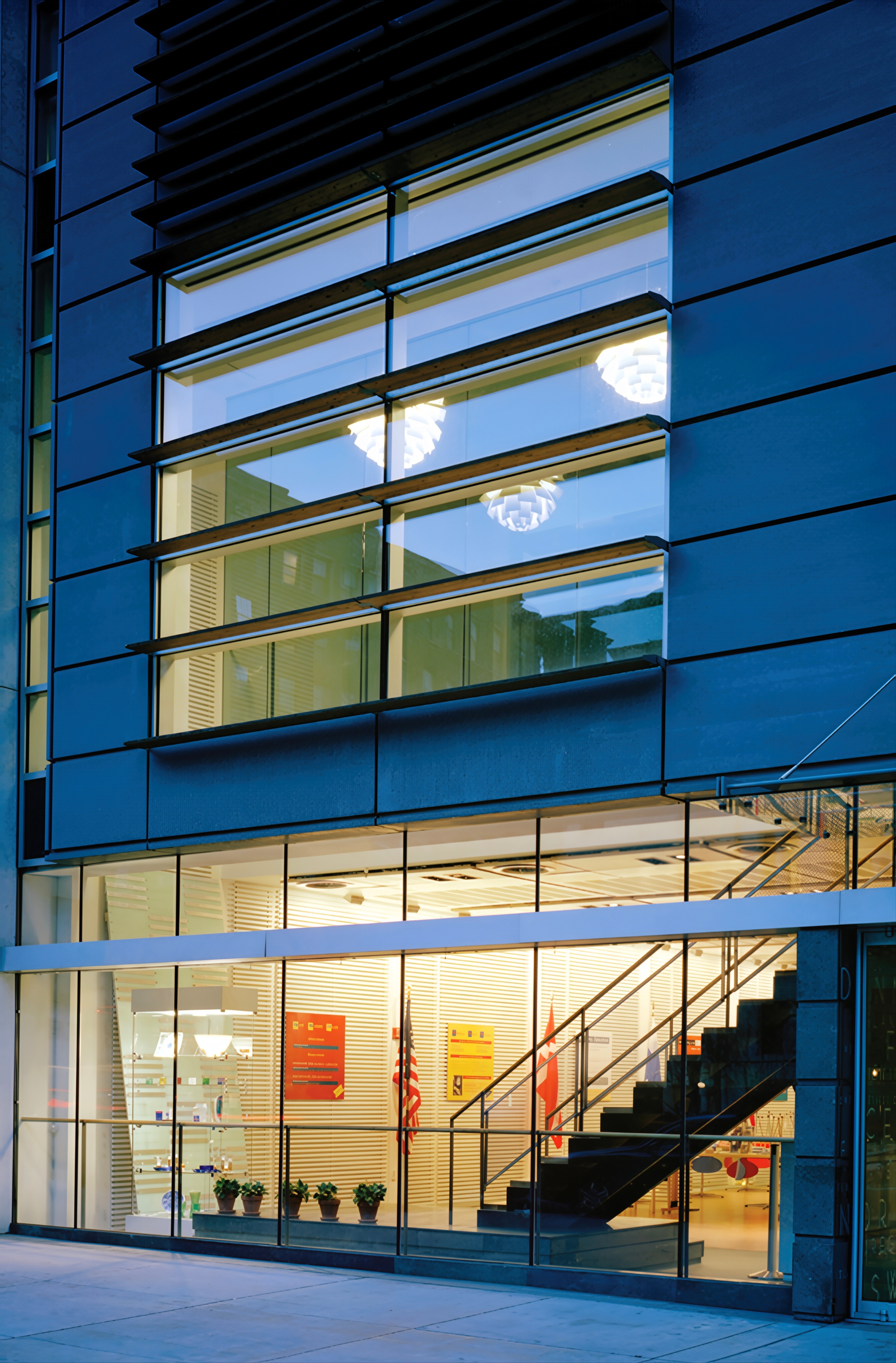
Scandinavia House has also featured Baltic and other Northern European artists in its exhibitions and concerts from time to time. For instance, the gift shop has curated Estonian design items during the film festival, and the gallery has hosted collaborative shows that include Baltic perspectives alongside Nordic ones. By embracing these opportunities, Scandinavia House demonstrates a forward-thinking approach: recognizing that cultural exchange need not be limited by strict geography. Whether it’s a Lithuanian folk band on stage or an Estonian jewelry pop-up in the lobby, such programming enriches New York’s cultural tapestry and reinforces Scandinavia House’s role as a hub for all flavors of Nordic and Northern art. The inclusion of Baltic neighbors also subtly nods to a larger narrative of regional solidarity – much as the Nordic countries cooperate with the Baltics in international contexts, their cultural emissaries collaborate here in New York. It’s yet another way the center has evolved with the times, responding to community interests and the ever-widening circles of global culture.
Part of a Nordic-American Network
As it celebrates 25 years, Scandinavia House stands as a pillar among Nordic cultural institutions in North America. When it opened in 2000, it was virtually unique – a unified cultural center representing multiple countries. In the years since, other Nordic-focused institutions have also grown and thrived across the continent, each with its own emphasis. On the West Coast, for example, Seattle’s National Nordic Museum (formerly the Nordic Heritage Museum) provides a deep dive into the history of Nordic immigrants and their contributions in America. In the Midwest, Minneapolis’s American Swedish Institute and numerous local heritage museums have long preserved the legacy of Scandinavian settlers. Washington, D.C. boasts the House of Sweden, a combined Swedish embassy and cultural venue that, along with other Nordic embassies, hosts exhibits and events in the nation’s capital. These and other organizations form a loose network devoted to celebrating Nordic culture abroad. Yet even in this company, Scandinavia House occupies a special place.
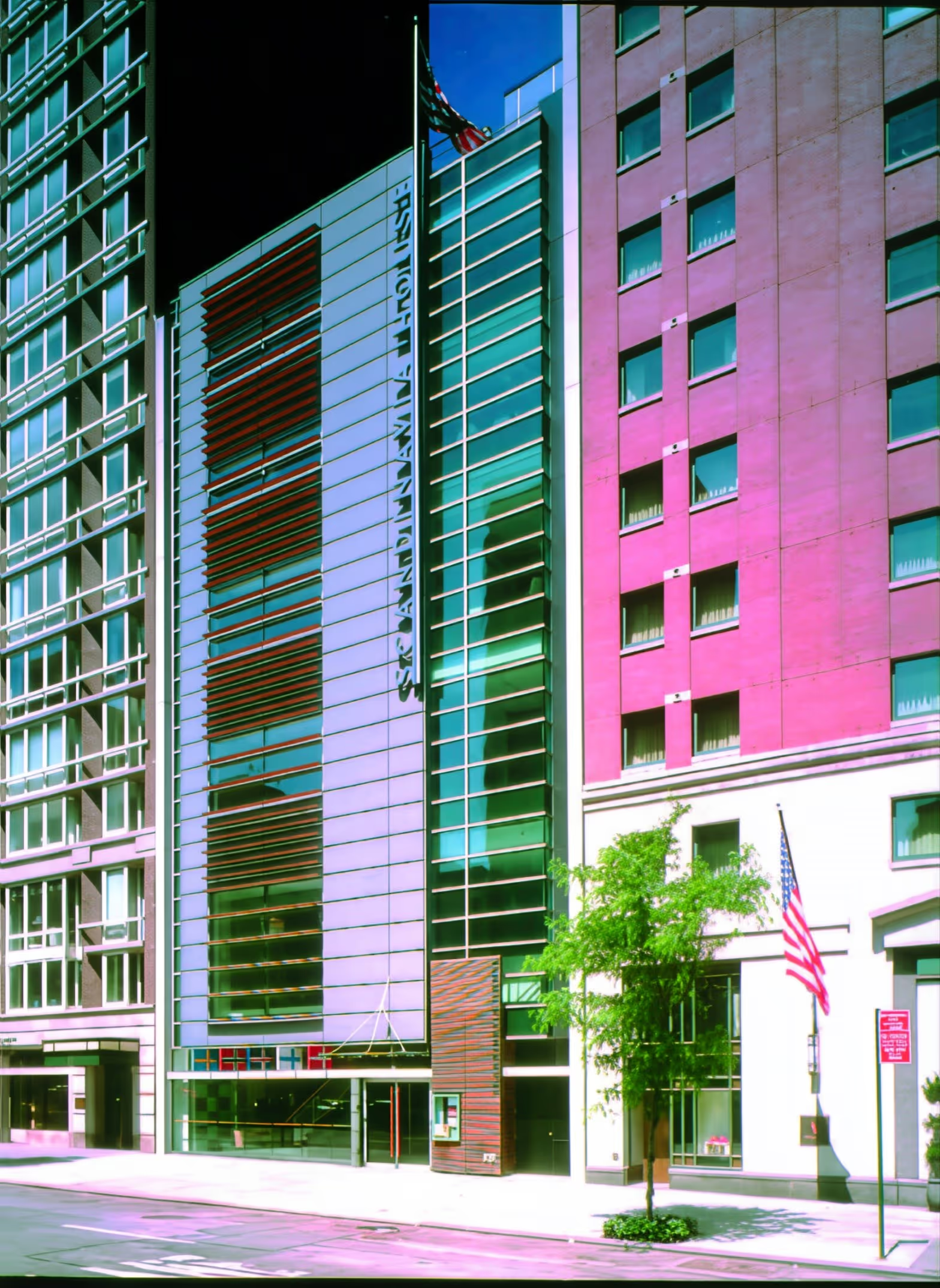
Located in the cultural epicenter of New York City, Scandinavia House operates at a national and international scale. Its programming is contemporary and pan-Nordic, complementing the more historical or country-specific approach of many regional museums. In fact, Scandinavia House often partners with sister institutions to amplify Nordic arts across the country. A touring exhibition may debut at the National Nordic Museum in Seattle and then travel to Scandinavia House in New York, reaching new audiences on the East Coast. Similarly, the annual Sámi Film Festival – celebrating the Indigenous Sámi people of the Nordic Arctic – has been presented jointly by Scandinavia House and the Nordic Museum, underscoring a coast-to-coast collaboration. Such partnerships maximize impact and symbolize the unity of purpose shared by Nordic institutions. As Eva Heidt, a Scandinavian-American community leader, put it at a recent anniversary event, “When we work together – Seattle, New York, Minneapolis, D.C., and beyond – we’re showing that our cultures aren’t confined to any one place. We strengthen transatlantic ties by making Nordic culture accessible to as many people as possible.” (This quote is a representative paraphrasing of community sentiment.)
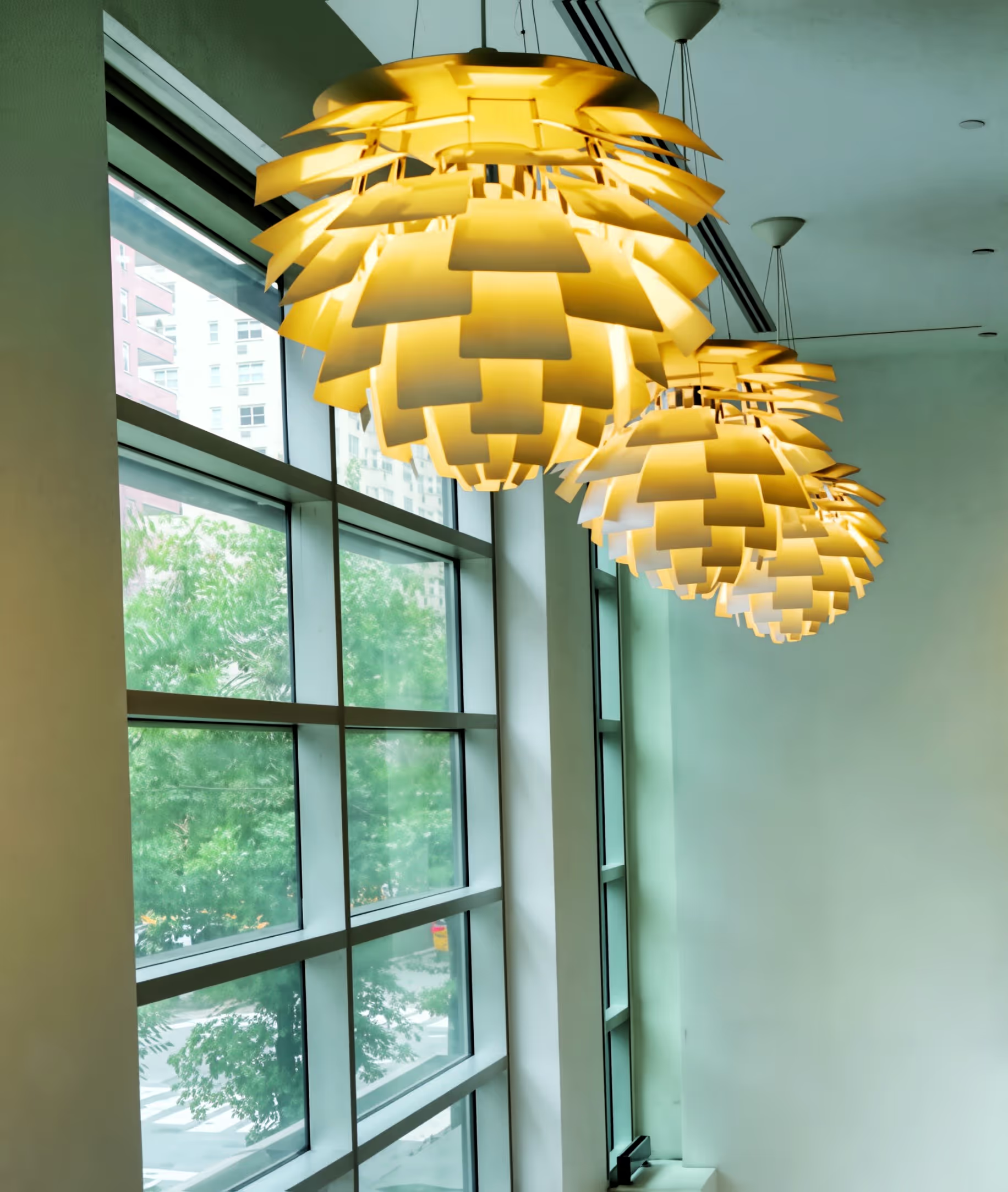
The success of Scandinavia House has even inspired newer initiatives. Nordic government officials and cultural organizations have cited it as a model for engaging the diaspora and general public. Its blend of museum-quality art exhibits, live performances, and hands-on learning is now considered a gold standard. By serving as a thriving example of Nordic cooperation abroad, Scandinavia House has helped spur interest in greater cultural exchange programs and support for similar centers in other major cities. In short, it has proven that a united Nordic cultural presence can resonate deeply outside Europe. The transatlantic cultural ties nurtured by Scandinavia House – through fellowship programs, artist residencies, and simply the friendships formed at events – have fortified the relationship between the U.S. and the Nordic region in countless intangible ways.

25 Years On – Legacy and the Road Ahead
Standing at its 25th anniversary, Scandinavia House can look back on a profound legacy of achievement. In a quarter century, it has grown from an ambitious idea into a beloved New York institution that has welcomed millions and impacted even more through its programs and outreach. It has lived up to its founding mission of fostering “greater understanding and appreciation” of Nordic culture, while continually adapting to the changing times. As Edward Gallagher remarked, what was once imagined “30 years ago became a reality” and continues to thrive, with a mission “more important and relevant than ever before”. The world has changed since 2000 – geopolitically, technologically, culturally – but Scandinavia House has remained a constant, a place where one can step off Park Avenue and into a corner of Nordic life. In doing so, it has strengthened the bonds of friendship across the Atlantic, one exhibit and one event at a time.
There is much to celebrate: the generations of children who got their first taste of Nordic heritage at a Scandinavia House puppet show; the emerging Nordic filmmakers and artists who had career-launching U.S. debuts in its galleries; the countless visitors who discovered something new about a faraway country and left with lasting inspiration. Over 3 million people have walked through its doors, each carrying a bit of the experience back out into the wider world. In an era when cultural diplomacy is as vital as ever, Scandinavia House stands as a testament to what can be achieved through vision, collaboration, and a love of culture. It has truly become, as Liv Ullmann eloquently said, a home – et hjem, ett hem, koti, heimili, hjem – for sharing heritage and finding common ground.
As Scandinavia House embarks on its next quarter century, plans are already underway to mark this silver anniversary with special programs and exhibits that both honor its history and look forward. The future promises even more innovation: digital programming to reach audiences nationwide, new partnerships with Nordic creatives, and continued dedication to educational exchange through ASF’s fellowships and grants. But at its heart, the mission will remain familiar. In the words of ASF’s founders over a century ago, the goal is to build goodwill between nations through culture and education – a goal that resonates just as strongly in 2025. With 25 years down and many more to go, Scandinavia House endures as a shining cornerstone of Nordic culture in America, a living bridge linking New York City with the lands of the Northern Lights, and a proud example of how celebrating our diverse heritages can unite us all.













.png)
.png)
.png)
